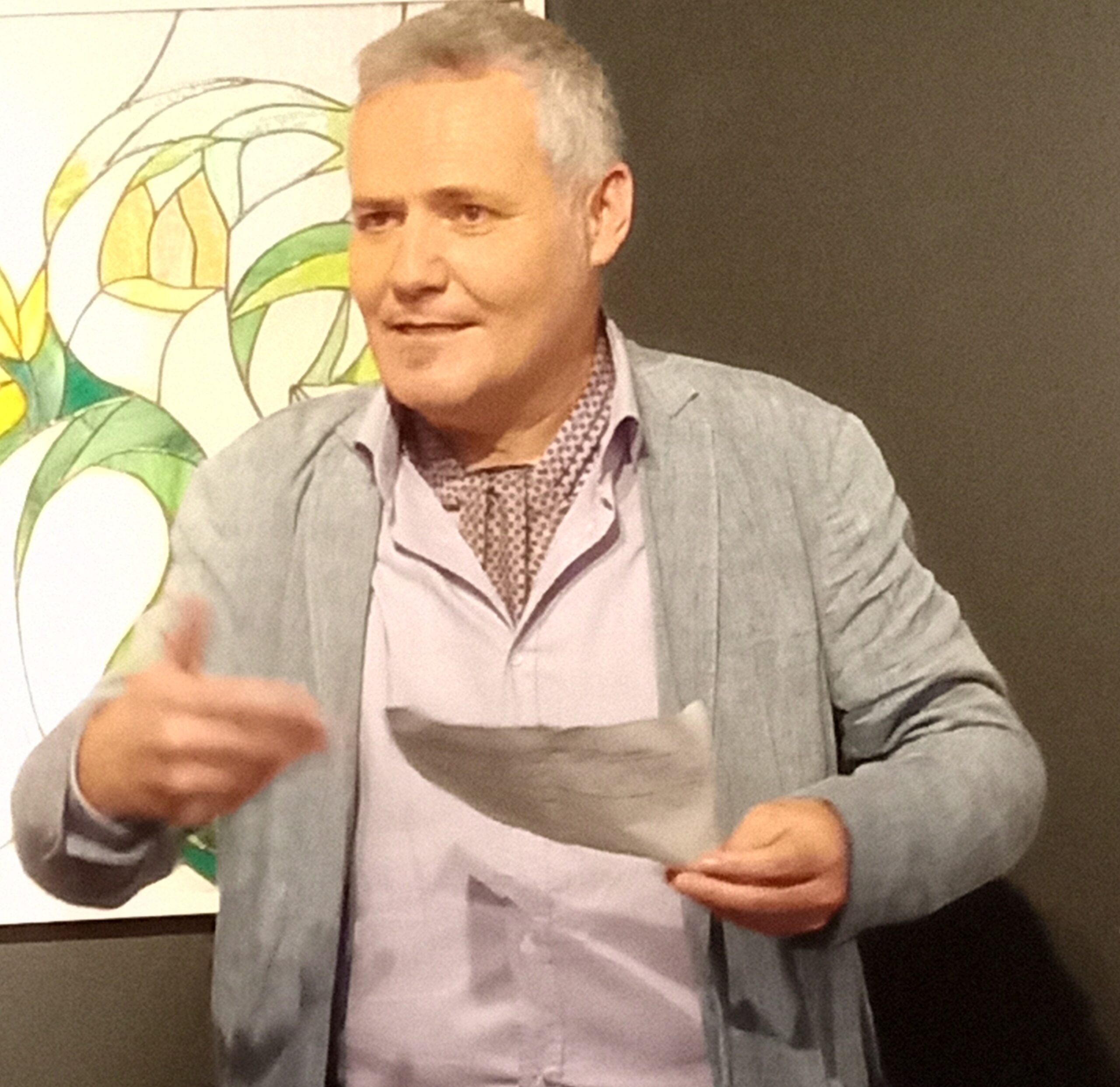«To be born is to fall in time». The simple power of these verses by Marina Cvetaeva may well refer to the underlying sub-theme of one of the most significant exhibitions within the FOTOGRAFIA EUROPEA 2024 festival in Reggio Emilia. Set in the transparent and vertical rooms of Spazio Gerra, the section “New Theaters of Real. Collaborating with AI” manifests the relationship that can exist between a contemporary photographer and the ubiquitous stone guest: Artificial Intelligence. The creative and technical dialogue between the five presented artists and A.I. has a number of facets ranging from the surreal (Katie Morris and Pierre Zandrowicz) to the ironic (the powerful scenes reconstructed by Antti Karppinen), from the need to show the invisible (Markos Kay’s macro creations) to rejection (Xavi Bou’s magnificent and poetic photographic visions, who uses a pencil to draw the trajectories of birds in the sky). Nonetheless, nature is the absolute protagonist of this edition of the Festival: the central theme is indeed “Nature loves to hide”, that is, its intrinsic capacity to conceal its genetic heritage from our sight, which it can then unveil in both harmonious and, unfortunately, highly destructive ways.

Xavi Bou, “Ornitography #222”. Courtesy the artist
In the festival’s densest exhibition venue, the Chiostri di San Pietro, one moves on a spectrum that oscillates between the two poles of the essence of this necessary partner of the human and the unveiling of unimaginable catastrophic power. To the first pole belongs Helen Sear’s photographic series (who uses the camera as a latitudinal scanner to capture the tree heritage in panoramic form); the “Sky Album”, a co-production between FOTOGRAFIA EUROPEA and the Archive of Modern Conflict, which didactically illustrates the astonishingly diverse world of clouds; Natalya Saprunova’s Lapland tundras; Terri Weifenbach’s ephemeral atmospheric phenomena; the political action of occupation of urban gardens in a Parisian arrondissement immortalised by Bruno Serralongue; the necessary awareness of landscape rights in Jo Ratcliffe’s message conveyed through the “Landscaping” project. To the negative declination of the natural force belong the reportage “There’s no Calm after the Storm” by Matteo De Mayda on the terrifying storm Vaia occurred in November 2018; the series “Sea of Cortez” by Yvonne Venegas on the Mexican city of Santa Rosalia (first one intensively exploited due to its proximity to copper mines and then inexorably being abandoned); “The Shunyo Raja Monographies” the long form photographic project by Arko Datto on the Ganges delta (one of the most representative places to verify the effects of climate change); the energy-intensive impact of bitcoin production in the project “An Act of Faith: Bitcoin and the Speculative Bubble” by Lisa Barnard.

Lisa Barnard, “Glacier, Iceland”, 2017. Courtesy the artist
The intense green of the grasshoppers is the absolute protagonist of Michele Sibiloni’s photographic project, who, with in-depth expertise due to his long knowledge of the Ugandan context, shows us how much of a resource the “Nsenene” (grasshoppers) can be for sustaining the income of so many families. With the project “Shifters”, Marta Bogdanska proposes an archive research focused on spy animals in the service of the human being. “Index Naturae” (curated by Stefania Rössl and Massimo Sordi of the OMNE Observatory) is instead a bibliographic promenade among the 116 photographic books published in the last five years and which have nature as their subject (further confirmation of the centrality of the theme in contemporary photography). Karim El Maktafi is commissioned by FOTOGRAFIA EUROPEA to explore the depopulation of inland areas (specifically, the Tuscan-Emilian Apennines). Finally, Silvia Rosi’s thematic series – exposed in the spacious rooms of the Collezione Maramotti – is also very interesting: it wonders about Italian Afro-descendants through photographs conceived for the hosting space and archive photographs of people involved in the “Disintegrata” project.

Arko Datto, “Access to many islands is still possible only via water, rendering them quite remote. Boats run across only once a day in certain places”, 2016. Courtesy the artist
FOTOGRAFIA EUROPEA thus confirms itself as an event of contemporary (and historicised) photography capable of being in tune with the spirit of the times and in connection with today’s society. Because, as T. S. Eliot would have said, «reality cannot be deprived of the other echoes of the garden».
Giovanni Crotti
Info:
various artists, FOTOGRAFIA EUROPEA 2024. La natura ama nascondersi
promoted by Fondazione Palazzo Magnani and Comune di Reggio Emilia
26/04/2024 – 09/06/2024
Reggio Emilia
fotografiaeuropea.it
Cover image: Walter Niedermayr, “Parco Casse d’espansione del fiume Secchia, Rubiera”, 1994-1997. Courtesy Associazione Linea di Confine per la Fotografia Contemporanea, Rubiera, RE © Walter Niedermayr

I am Giovanni Crotti and I was born in June 1968 in Reggio Calabria to be reborn in June 2014 in Piacenza, the city where I live. My income is guaranteed by digital consultancy, and I then spend it largely on art and letterature: I have been and am a content curator and organizer of cultural events for artists, galleries and institutional spaces, as well as a writer of exhibition reviews, creatives of every era and books.






NO COMMENT